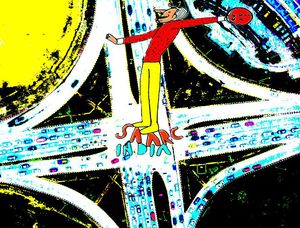Prime Minister Narendra Modi, who has done more than anyone else to destroy the South Asian Association for Regional Cooperation (SAARC), chose his invitation to the Hiroshima G7 meeting to air his views on south Asian unity. The setting was somewhat appropriate because just as the atom bomb destroyed the city of Hiroshima, his statement has nuked the idea of a south Asian union.
SAARC was first proposed in 1979 and initially received with considerable skepticism. Yet, by patient negotiation, the parameters were put together over the next five years for SAARC to be launched in Dhaka in December 1985. Although its achievements were modest, it provided a useful forum for SAARC leaders to get together for regular bilateral talks on the sidelines.
The main Indian reservation about SAARC was that it could provide a hostile platform for attacks on India, not only by Pakistan but even by monarchical Nepal and a Sri Lanka over-run with internal ethnic insurrections. The geographical asymmetry was duly noted: that India alone had common land or sea boundaries with the other members, none of the others having contiguous frontiers with each other. Therefore, the most fundamental parameter laid down was that bilateral issues, especially political differences, would not be on the multilateral table, where the focus would be on issues of regional development cooperation, especially where complementarities could be availed of for mutual benefit. Infrastructure and common public health issues were kept in the forefront and the cultural diversity of the association was highlighted and celebrated.
While sensitive bilateral political issues were off the SAARC agenda, the multiple days’ presence of the leaders afforded them opportunities for bilateral interaction, such as Modi’s own secret interaction with Nawaz Shariff organised at the Kathmandu summit in 2015 by a business intermediary (after Modi had publicly snubbed the Pakistan prime minister).
Having sabotaged SAARC by his refusal to attend the Islamabad summit, Modi, in Hiroshima, brought up a concept of a South Asian Democratic Union. “Democratic” effectively expels Taliban Afghanistan from the earlier SAARC grouping and provides the window through which the proposed new grouping could eliminate Pakistan. To be a grouping of “democracies” members would be subject to invasive external judgements on whether or not they complied with “democratic” norms. Indeed, authoritarian India, under the present regime, which has seen the country tumbling on all accepted international indices of democratic governance, would be under the microscope. SAARC had carefully excluded such unwarranted interference from near and far.
Worse, much worse than this, is Modi’s premise that the proposed South Asian Union must be among those who share a “common history and culture”. This is clearly designed to exclude Islamic countries, like Pakistan and Afghanistan, and even the Maldives, who proclaim the religious character of their states in their constitution and would hotly contest the suggestion that they share a “common” history and culture with India. Bangladesh would find itself in a pickle because although it is described as “secular” in its (amended) constitution, it is clearly Islamic in its overall nature. Modi’s formulation also unwittingly excludes Buddhist states like Sri Lanka and Bhutan who would reject the notion that their history or culture is indistinguishable from India’s. Perhaps when Nepal was a ‘Hindu Rashtra’, under the now deposed monarchy, it might have accepted the idea of a shared history and culture, but today’s fiercely independent, nationalistic and secular Nepal would certainly ferociously object to its history and culture being subordinated to India’s.
For that matter, does an India that is at war with itself over “Aurangzeb ki aulad”, have a common history or culture? We are united as a nation only because of our “unity in diversity”. That alone can be the basis of south Asian unity.


